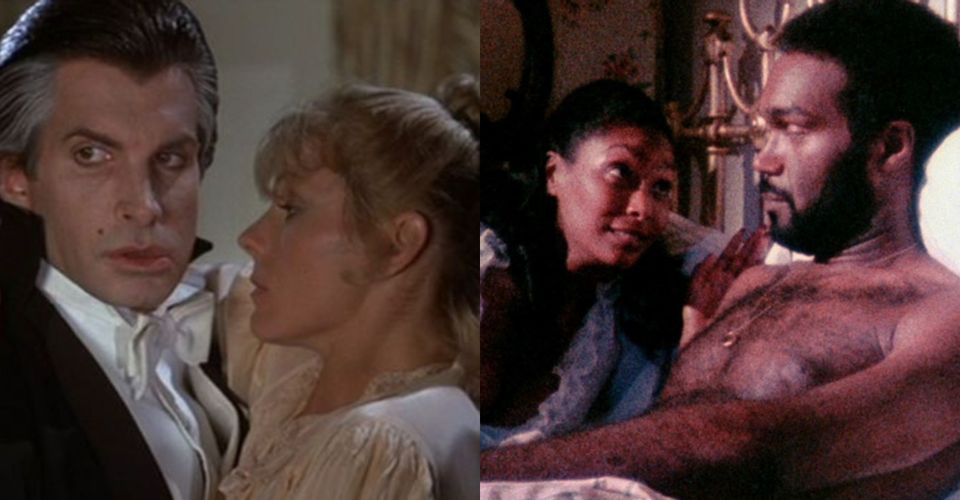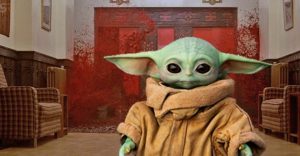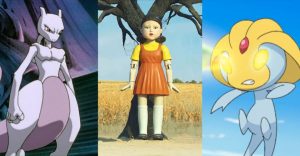10 Vampire Movies From The ’70s You Probably Haven’t Seen (But Should)

The ’70s were an interesting time for cinema, when censorship was being re-evaluated and avante garde foreign language movies were pushing the boundaries of American film making. Vampire movies, which had always carried an undercurrent of sexuality in their narratives, became hyper-sexualized, exploring themes of carnal desire through vivid imagery that often pushed the envelope of film standards for the era.
The genre as a whole became more experimental both in scope and in casting choices, and the public -perhaps put off by the changing attitudes in cinema- became divided about the strange new creative decisions. Some gems were only popular when they were made, and others have developed a cult following in the decades since, but all deserve reverence for their distinct qualities.
10 Scars Of Dracula (1970)

By the time the fifth movie in the Hammer Films Dracula franchise premiered, Sir Christopher Lee had already made a legacy playing Count Dracula. He’d been killed and resurrected numerous times throughout the series, and Scars of Dracula served as the soft reboot that in many ways was the best of the bunch.
Not since his appearance in the original Dracula (1958) has Lee been given so much to do as the Prince of Darkness, and he more closely resembles the titular literary character in Bram Stoker’s novel by being an “icily charming host”, crawling on the walls of the castle, and having command over nature. Much of the plot of the movie inspired the mini-series Dracula (2019) on Netflix.
9 Daughters Of Darkness (1971)

One of the more salacious vampire movies in the early part of the era, Daughters of Darkness combines the racier themes with a moody and artistic aesthetic that elevates the material a bit more than expected.
Typical grindhouse tropes abound when a young newlywed couple visit a Transylvanian hotel to get to know each other and unwittingly enter into a feast of debauchery and blood organized by several powerful female vampires, and a Countess who mirrors the Lady Bathory of legend.
8 Blacula (1972)

One of the top-grossing movies of 1972 and winner of the Best Horror Film at the Saturn Awards, Blacula is more than simply a blaxploitation horror movie; it is credited as a precursor and inspiration to important Black horror movies like Us and Get Out from venerated filmmakers like Jordan Peele.
It focused on Mamuwalde, an African prince who went to Count Dracula in an effort to gain his help in suppressing the enslavement of the Ibani tribe. The Count rejects him, then turns him into a vampire, and finally kills his wife. After he reawakens from slumber in the present day, Mamuwalde seeks bloody vengeance. Like the white men who often played Dracula, William Marshall was a classically trained Shakespearean actor, and made Mamuwalde an iconic black horror character.
7 Vampire Circus (1972)

When a village lord perceived to be a vampire is killed for murdering locals, he puts a curse on his body, resolute in being resurrected again. When a plague hits the rural town, the people perceive his vengeance to be upon them, until a traveling circus breaks the quarantine to offer them diversions from their terror.
All too quickly the townsfolk realize that it’s the circus, run by performers dedicated to ritual sacrifice to precipitate the lord’s resurrection, that is the true manifestation of his curse. A psychedelic, surreal wild ride of pandemonium, it’s the best of its genre, and even features a young David Prowse as the circus’s strongman several years before he would don Darth Vader’s iconic suit in Star Wars.
6 Ganja And Hess (1973)

Ganja And Hess, on which Spike Lee’s remake Da Blood Of Jesus (2014) is based, is placed in the decadent world of Black America in the ’70s, and focuses on a wealthy widow who lives in a palace-like manor with nothing but her thoughts, yearning for a transformation experience.
She’s visited by an anthropologist who’s been turned into a vampire by a dagger belonging to a tribe of ancient African bloodsuckers, and he takes her on a spiritual and physical journey that uses vampirism to explore the pain of Africans over the centuries. There’s a seductive power to the unveiling of complex social history that allows jarring material to wash over viewers in a profoundly moving way.
5 Blood For Dracula (1974)

In one of the more unique Dracula iterations, Blood For Dracula posits Dracula in a changing world where changing standards has led to fewer and fewer virgins for him to feed on, and he finds his power weakening as a result. He flees to staunchly Catholic Italy in the hopes of finding “pure blood”, but soon finds himself starved out there, too.
Dracula’s frustration represents the abolishing of prevailing patriarchal norms; women’s sexual freedom and the abandonment of classical, puritanical mindsets make him a tragic figure of a decaying past whose immortality is completely dependent on an era of purity and rigid classical gender norms.
4 Martin (1977)

George A. Romero may have been known for his Night of the Living Dead series, but he could just as easily have made a legacy featuring vampires instead of zombies. In Martin, a young teenager believes beyond a shadow of a doubt that he’s a vampire, using syringes to get his blood and constantly prowling for victims.
Fraught with psychological discomfort and uneasiness as the movie moves towards its inevitable conclusion, Romero’s off-brand masterpiece showcases his imagination within a genre that could so easily lend itself to superficial thrills.
3 Nosferatu, The Vampyre (1979)

There have been several versions of F.W. Murnau’s Nosferatu since its debut in 1922, but Werner Herzog’s Nosferatu, The Vampyre might be the most visceral and the most brazen. The loneliness and sadness of immortality are wallowed in, and his longtime collaborator Klaus Kinski makes the Count a pathetic creature who is weary of eternal life.
Even as he’s becoming irrelevant, there are glimpses of the Prince of Darkness’s Old World power and charm, and when he finally feasts on Lucy Harker, it’s elevated to a status of iconic within the mythology surrounding one of movie and literature’s most prominent characters.
2 Love At First Bite (1979)

There have been many campy comedies surrounding vampires, but perhaps none quite as hilarious and delightful as Love At First Bite, in which the very tan, very suave George Hamilton dons the black cape of Count Dracula and terrorizes New York City.
The movie lampoons every Hammer Films Dracula picture ever made and pokes fun at all the familiar vampire tropes, all set to a boogie-woogie disco soundtrack.
1 The Omega Man (1979)

The precursor to I Am Legend, The Omega Man follows Dr. Neville, whose experimental vaccine has allowed him to survive a terrible biological war that decimated the Earth’s population. Dogging his every step in the new post-apocalyptic world he finds himself in are mutated, nocturnal people with a thirst for his blood.
Here, the creatures blame science for their condition, and Neville must die as a representation of everything that has destroyed them. Vampirism isn’t so much the cause of their hunger as a symptom of it; a hunger for progress and its ramifications when the powers that be are held accountable for their actions, though the consequences are just as much self-inflicted.
About The Author


















